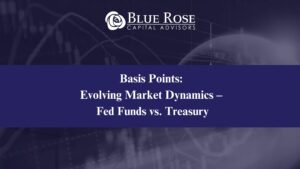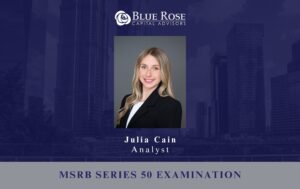Updated: May 15
Credit Rating Agency Outlooks
That was December.
Policy and Macroeconomic Uncertainty
The start of President Trump’s second term swiftly introduced uncertainty into the minds of higher education leaders across the country and presented numerous challenges to financial operations. The White House has engaged in a slew of executive orders and other actions affecting higher ed. At the same time, in Congress the desire to permanently extend the 2017 Tax Cuts and Jobs Act (“TCJA”) has led to several proposals that would affect the sector as Congress’s budget reconciliation bill requires $1.7 trillion in net spending cuts to allow $4.5 trillion in net tax cuts.⁴
Implications for Revenue
Several college and university revenue streams have already been affected with more challenges to be determined. Proposals under consideration for the extension of the TCJA include an increased excise tax on some university endowments, up to 21%, or cutting the current endowment-value-per-student tax threshold from $500,000 to $200,000 (the 1.4% tax only affects 50-60 institutions under current law).⁵ The Administration’s proposed 15% cap to NIH indirect fund reimbursement and termination of research grants has resulted in layoffs and rescinded offers to graduate students in preparation for these reduced federal distributions. Research cuts threaten, in particular, R1 institutions. For certain schools, including Columbia, the University of Pennsylvania, Princeton, and Brown, among others, the Administration has halted or threatened to halt federal funding due to perceived inadequacies in addressing recent antisemitism on their campuses.⁶ Tuition revenue may be affected, too. Fears that fewer international students will matriculate to American schools (either due to reduced visas or decreased demand) also threatens this revenue stream. In addition, as the Administration begins the work of dismantling the Department of Education, the entire sector is concerned disruption to student loan programs will introduce payment delays to institutions, a reduction in total grants such as Pell Grants, or possibly both.
Threat to Tax-Exempt Borrowing
Higher education’s cost of capital may be affected, too: tax-exempt municipal bonds are among the contemplated cuts to provide potential savings to fund the extension of the TCJA. One proposal calls for the complete elimination of all tax-exempt borrowing; this termination of all “muni bonds” would affect public universities’ access to the tax-exempt capital markets (as well as cities, sewer districts, and other municipal entities). Another proposal cuts only the “private activity bonds” accessed by private colleges and universities to issue tax-exempt bonds through issuing authorities.⁷ The loss of tax exemption may increase the cost of borrowing by approximately 30% depending on the duration of the borrowing.
With all this stress and uncertainty to America’s higher education institutions, it’s no wonder that Moody’s has already revised its outlook of the higher education sector to “Negative”, down from the “Stable” outlook they printed in December. In its update report, Moody’s enumerated the slew of policy risks that have a potential negative credit impact on the sector.⁸ While issued only a few weeks ago, Moody’s revised outlook doesn’t even account for the potential inflationary forces that may be unleashed by the Trump administration’s tariff policy agenda announced on April 2, 2025.⁹
What is to be done?
Blue Rose Capital Advisors is Presenting at the Leveraging Debt for Campus Improvement live webinar
Blue Rose Capital Advisors’ Brandon Lippold, Vice President, and Maxwell Wilkinson, Vice President, are presenting on a live webinar with CliftonLarsonAllen on April 9, 2025. Join our complimentary webinar, Leveraging Debt for Campus Improvement, to discuss how to effectively finance campus innovations through strategic debt use. At the end of the session, you will be able to:
Identify how to responsibly leverage debt to advance campus initiatives
Identify debt structuring strategies to avoid common pitfalls
Recognize financing trends in higher education
CLA will provide CPE credit for the webinar, Leveraging Debt for Campus Improvement – April 9. See event page for details and CPE information. Recorded webinars are not eligible for CPE.
Meet the Author:
John Elliott | [email protected] | 312-332-1336
Mr. Elliott serves as Blue Rose’s Chief Compliance Officer. He also provides analytical and research support and project management for Blue Rose’s P3, strategic consulting, and debt advisory practice. Mr. Elliott joined Blue Rose’s California office as an Associate in 2021.
Prior to Blue Rose, Mr. Elliott worked as a research associate for a non-profit think tank in Washington, DC and as a compliance consultant for federal contractors.
Media Contact:
Laura Klingelhutz, Marketing Coordinator
952-208-5710



